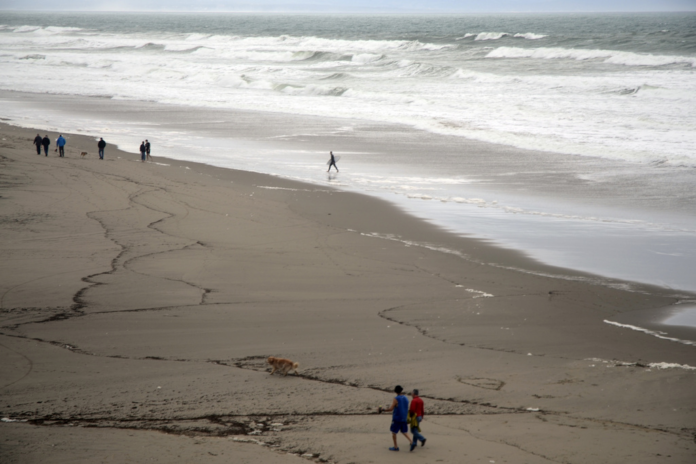This week, climate leaders from across the world are gathering in Baku for the 29th United Nations Climate Change Conference. To reach the landmark renewable energy targets set at last year’s global climate summit, the world will need to invest trillions of dollars to bring new clean energy generation online.
As part of that investment, it is time we finally start utilizing a significant and untapped clean energy source: our oceans, tides and rivers.
Over the last four years, the U.S. has made major strides to bring more clean energy projects online. President Biden’s Inflation Reduction Act provided one of the most significant investments into America’s clean energy sector that the country has ever seen.
Yet we have a long way to go to transition the United States and the world to clean energy.
In addition to continuing the tremendous growth in solar and wind energy, the conversation on clean energy needs to go further to fulfill our energy needs. Marine energy — long underfunded and underutilized — can help us reach our clean energy goals.
Marine energy can be generated in many forms. Some technology captures the kinetic energy from ocean waves and converts the rising and falling motion into clean energy. Others capture the energy with underwater turbines during the rise and fall of tides, or from the natural flow of rivers.
After four decades of research and development, marine energy has matured to a point where it can take a leading role as part of our clean energy strategy.
Wave energy is reliable: ocean waves are constant, providing power day and night, regardless of weather conditions. The waves off the coast of the United States have a technical energy potential of approximately 1,400 Terawatt-hours (TWh) — about 34 percent of all electricity generated in our country. Tidal energy adds a technical potential of 220 TWh per year.
Today, this vast energy potential remains untapped.
Marine technology offers a strong opportunity for the U.S. to lead in the next frontier of clean energy. The Marine Energy Technologies Acceleration Act would provide a historic $1 billion investment in research, demonstration projects, workforce development and more efficient permitting. This can help unlock the tremendous potential of marine energy, and lessen our reliance on fossil fuels to meet our energy needs.
The summer of 2024 was the hottest on record, surpassing the record set last year. If we don’t get serious about investing into every possible clean energy source, this will become a deadly trend.
At AltaSea, a 35-acre public-private partnership campus focused on ocean-based climate solutions in the Port of Los Angeles, there are companies that have developed technologies to harness that energy and roll out projects along the U.S. coastline.
And the genius of their technology lies in its simplicity.
One company uses floaters attached to pre-existing onshore structures, like breakwaters, jetties and wharfs, which convert the rising and falling of the waves into clean energy — directly to the grid or it can be stored in pressurized tanks without a battery for later use. A pilot project is set to be installed at the Port of Los Angeles in the coming months.
Offshore, there is a company that deploys fully submerged devices that can generate energy just from the ocean moving them. The energy is then transferred to the grid through subsea cables, potentially alongside offshore wind farms.
The benefits of these technologies go beyond clean energy production. Nearly 40 percent of the U.S. population lives in coastal communities. The Marine Energies Technology Act has the potential to revitalize communities that have been economically disadvantaged or impacted by the decline of traditional industries by creating jobs in manufacturing, engineering and maintenance.
It also offers tremendous energy resiliency benefits to remote communities and communities impacted by extreme weather. The ocean never stops moving. It is the perfect complement to intermittent clean energy resources.
Now is the time to take advantage of the tremendous potential that ocean energy has by passing and signing into law The Marine Energies Technology Acceleration Act. The legislation, matched with marine energy technology being rolled out around the globe, can usher in an emerging clean energy resource to help our nation and our communities meet clean energy and decarbonization goals, reduce pollution and create high-paying jobs.
Nanette Barragán represents the 44th District of California and Terry Tamminen is president and CEO of AltaSea at the Port of Los Angeles.




